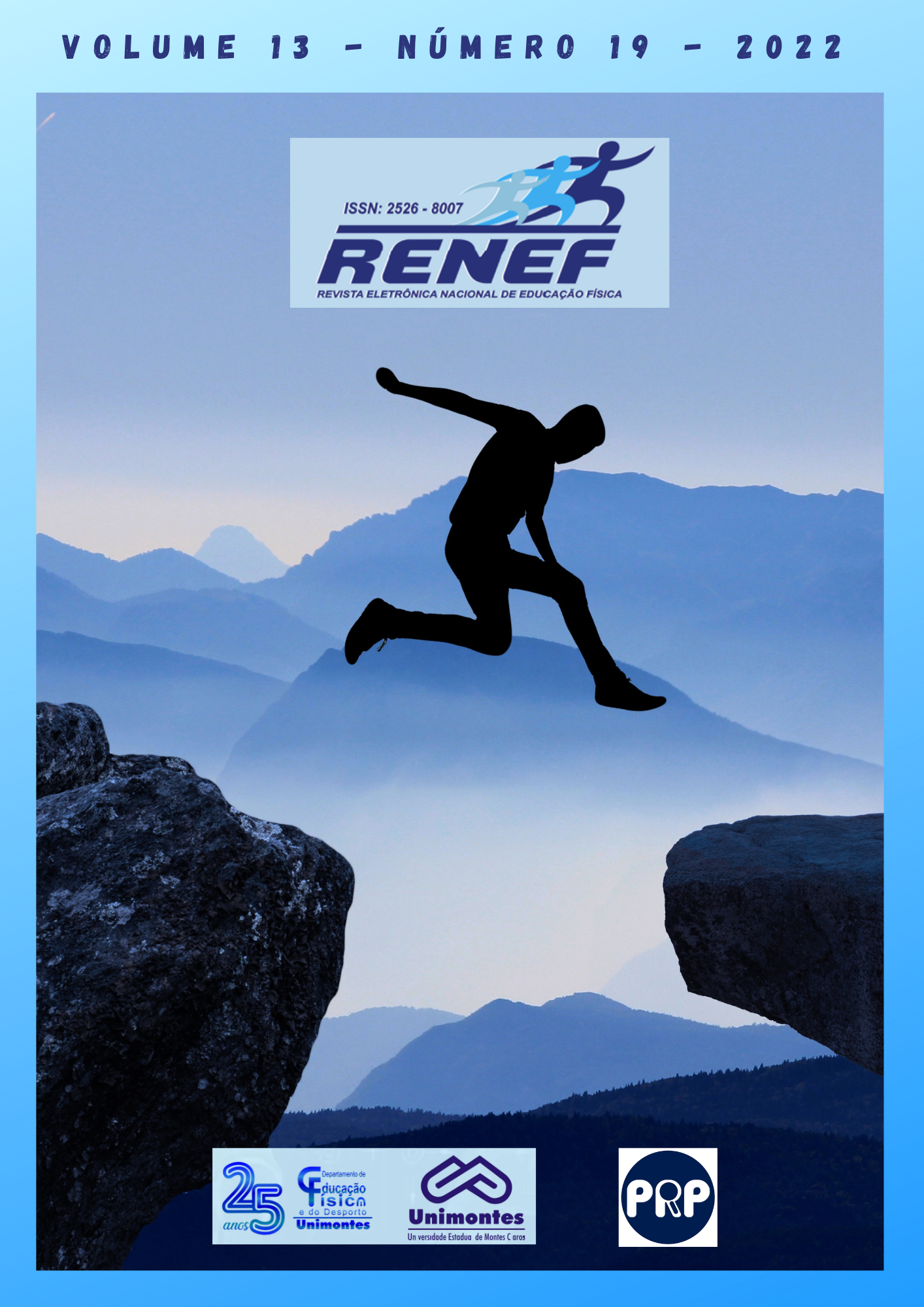EFEITO DO EXERCÍCIO RESISTIDO NA FORÇA MUSCULAR DE CAMUNDONGOS C57BL/6 COM CAQUEXIA ASSOCIADA AO MELANOMA CUTÂNEO EXPERIMENTAL SINGÊNICO
DOI:
10.46551/rn2022131900058Keywords:
Skin cancer, cutaneous melanoma, cachexia, resistance exercise, muscle strength.Abstract
ABSTRACT: Objective: The purpose of this study is to evaluate the effect of different formats of resistance training on muscle strength in C57BL/6 mice cachexia associated with cutaneous melanoma. Material and methods: The mice were divided into 2 groups: I. training group (n=8) and II. training group 2 (n=8). The first evaluation of muscle strength took place 7 days before inoculation, and the second 15 days after inoculation. Training 2 took place after all animals had cachexia, all animals were diagnosed with cachexia on the tenth day after inoculation. Results: The results shown in table 01 are from the first and second evaluation of absolute strength and relative strength, of the front limbs of mice C57BL/6 with cachexia associated to the cutaneous melanoma that will accomplish, two different resistance training planning. In training 1 the absolute and relative force delta values were respectively - 4,03 + 1,31 g e - 0,22 + 0,16 g/g. Already in training 2 the absolute and relative force delta values were respectively - 3,17+ 1,28 e - 0,54+ 0,36 g/g. When performing the inferential analysis of delta values between the trainings, there is no significant difference in the decrease. Conclusion: The training proposals did not cause improvement in muscle strength in mice C57BL/6 with cachexia associated to the cutaneous melanoma. The results of this study, evidence the need for further research investigating the question of resistance exercise proposals in improving both absolute and relative strength in cancer issues related to cachexia.
Downloads
References
ARNOLD, Melina; de Vries, Esther; Whiteman, David C; et al.
Global burden of cutaneous melanoma attributable to ultraviolet radiation in 2012.
International Journal of Cancer. Volume 143, Issue 6 p. 1305-1314
http://dx.doi.org/10.1002/ijc.31527. Disponível em: https://www.iarc.who.int/news-events/global-burden-of-cutaneous-melanoma-attributable-to-ultraviolet-radiation-in-2012/ Acesso em: 02 fev. 2022.
COSTA, Giovana Evelin et al. Efeito do treinamento resistido com choque no diâmetro, força e peso muscular de camundongos C57BL/6. RBPFEX-Revista Brasileira de Prescrição e Fisiologia do Exercício, v. 14, n. 92, p. 535-540, 2020.
DE OLIVEIRA, Tayrine Resende et al. Efeitos da atividade física na histomorfometria muscular esquelética de modelo tumoral murino de caquexia. Revista Pesquisa em Fisioterapia, v. 10, n. 4, p. 642-647, 2020.
DE SÃ, Aldecy Batista et al. Efeito da atividade física em ambiente enriquecido na forà § a muscular de camundongos C57BL6J. RBPFEX-Revista Brasileira de Prescrição e Fisiologia do Exercício, v. 13, n. 86, p. 1061-1067, 2019.
INCA. O que é câncer. 2020. Disponível em: https://www.inca.gov.br/o-que-e-cancer Acesso em: 02 fev. 2022.
INCA. Tipos de câncer. 2021. Disponível em: https://www.inca.gov.br/tipos-de-cancer/cancer-de-pele-melanoma Acesso em: 02 fev. 2022.
IRWIN, Melinda L.. Guia do ACSM para Exercício e Sobrevivência ao Câncer. 1ª Ed. São Paulo: Phorte, 2015.
MACHADO, Wallace; VIEIRA, Marcelo Carvalho; NASCIMENTO, Pablo Marino Correa. Tópicos sobre exercício físico e Insuficiência Cardíaca: Miopatia e Caquexia na origem da intolerância ao esforço. Disponível em: https://www.researchgate.net/profile/Marcelo-Vieira-16/publication/316853119_Topicos_sobre_exercicio_fisico_e_Insuficiencia_Cardiaca_Miopatia_e_Caquexia_na_origem_da_intolerancia_ao_esforco/links/5913cd060f7e9b70f498e7bf/Topicos-sobre-exercicio-fisico-e-Insuficiencia-Cardiaca-Miopatia-e-Caquexia-na-origem-da-intolerancia-ao-esforco.pdf Acesso em: 26 fev. 2022.
RODRIGUES, Vinícius D et al. Effects of resistance training and physical activity on muscle strength, skeletal muscle tissue, white adipose tissue and survival in C57BL/6 mice com cutaneous cachexia related to melanoma. 2018. 25 p. Tese (Doutorado em Ciências da Saúde) - Universidade Estadual de Montes Claros, Universidade Estadual de Montes Claros, Acesso em: 26 fev. 2021.
TISDALE, Michael J. Mechanisms of Cancer Cachexia. Physiol Rev 89: 381– 410, 2009; doi:10.1152/physrev.00016.2008 Disponível em: https://journals.physiology.org/doi/full/10.1152/physrev.00016.2008?rfr_dat=cr_pub++0pubmed&url_ver=Z39.88-2003&rfr_id=ori%3Arid%3Acrossref.org Acesso em: 08 mar. 2022.
TUBINO, Manoel José Gomes. Metodologia científica do
treinamento desportivo. 3ª edição. São Paulo: Ibrasa, 1984.
VAUGHAN, Vanessa C.; MARTIN, Peter; LEWANDOWSKI, Paul A. Cancer cachexia: impact, mechanisms and emerging treatments. Journal of Cachexia Sarcopenia Muscle 4. p. 5–109 https://doi.org/10.1007/s13539-012-0087-1 Disponível em: https://link.springer.com/article/10.1007/s13539-012-0087-1 https://rbc.inca.gov.br/revista/index.php/revista/article/view/1910/1161 Acesso em: 25 fev. 2022.


















